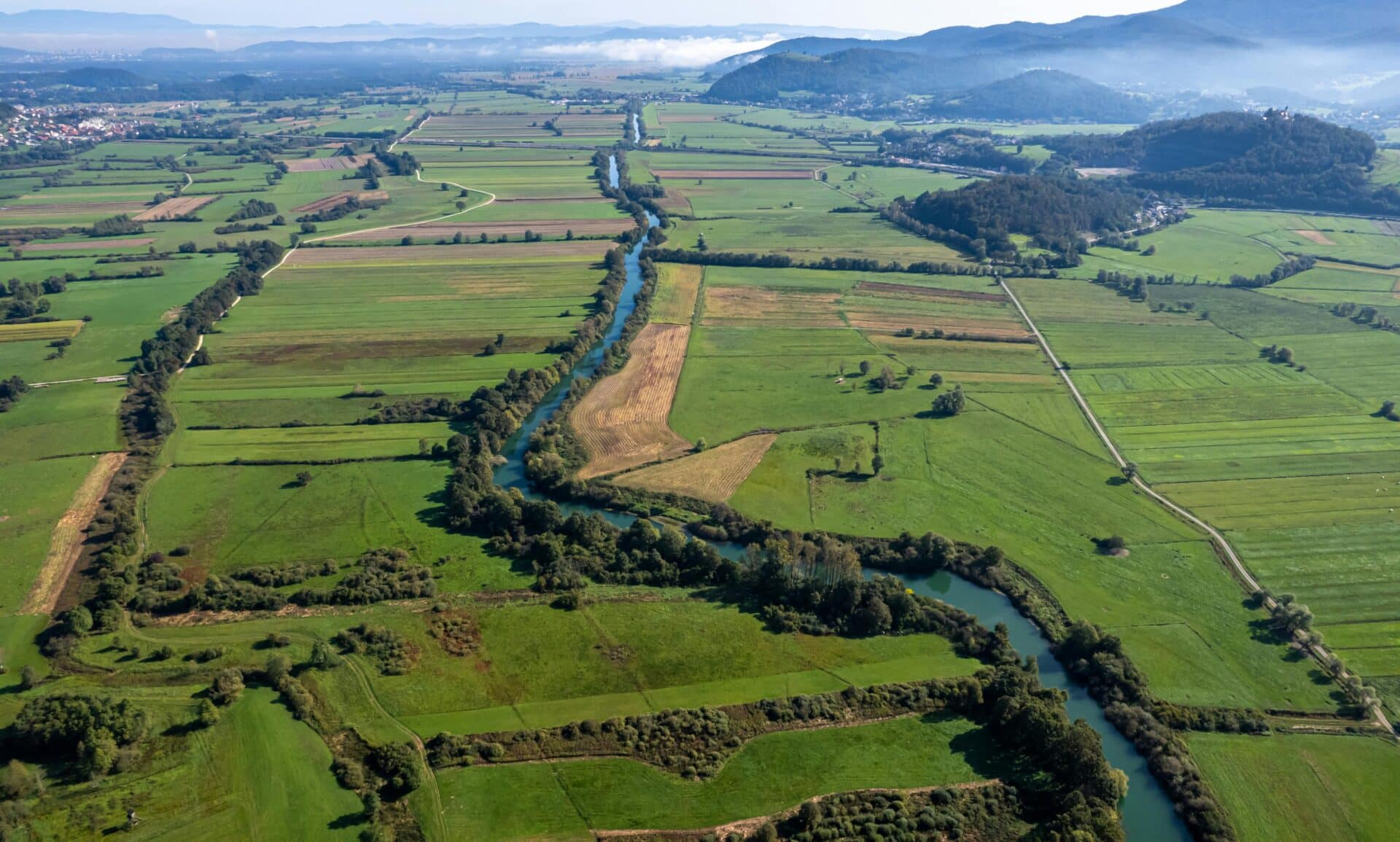Per the last Census, approximately one out of every three adults in the US currently rent their residence. So, most people understand the basics of what a lease is: a contractual agreement in which an individual (i.e., the lessee or tenant) pays some amount to use an asset owned by someone else. But when most people think of leases, they likely imagine signing a contract to access a home, apartment, or vehicle.
So, exactly what is a land lease (or ground lease)?
Among the varied types of lease arrangements, you can also lease land for all kinds of use purposes. Property owners—especially those in more rural areas—often make these land leasing deals with people interested in farming, hunting, large-scale commercial use, recreation, or other activities. With a fair deal, both parties benefit: The landowner can now generate income from the property, and the lessee gains an opportunity they otherwise wouldn’t have without making a considerable purchase or taking on debt.
If you’re interested in how to lease land to get a jumpstart toward your dream, keep reading. We’ll break down all the factors to consider when looking to lease land rather than buy it outright.
Understanding the Basics of a Land Lease
How does a land lease work? A basic land lease agreement is similar to other leases in that it involves:
- Two primary parties: the property owner(s) and the lessee(s)
- Terms and conditions documented within a lease contract
- Negotiating over final contract stipulations
- Signatures that make the contract binding and enforceable
By signing the contract, the lessee can access and use (a designated portion of) the owner’s property for a set duration. Unlike traditional property ownership, the party who owns the land and the party who uses the land aren’t the same.
Because a lease’s terms—such as the contract duration, cost, and acceptable property uses—depend on the involved parties’ mutual agreement, contracts, and stipulations can vary significantly outside of relevant laws and regulations.
Why Do People Lease Land?
Regarding what leased land is used for, individuals might decide to sign a land lease for all sorts of reasons, but the most common likely relates to transitional stages or financial reasons. In virtually all circumstances, a short-term lease will always cost less than buying land—which leaves more resources to invest elsewhere. And by designating an end date for a specified lease period, both property owners and lessees retain flexibility over whether to extend, revise, cancel, or conclude the original agreement for any reason.
For example, perhaps you’ve always dreamed of getting out of the big city and starting a farm, but you don’t have any experience tilling the land. Rather than allowing your pastoral pursuit to languish, leasing farmland for a short period allows you to try it out and gain experience with far less risk than a land purchase.
Another type of transitional stage may involve commercial agriculture with long-term plans to move or expand. If the ideal commercial property isn’t yet available to purchase or operations haven’t scaled up enough, leasing land provides an intermediary solution.
Some outdoor recreationists may even seek very short leases (e.g., days, weekends, hunting seasons) to access a private refuge. This can be especially common for those who’d only be able to visit a property a few times per year. If you cannot justify purchasing land, leases can offer a perfect compromise, especially if you’re leasing land for hunting or other recreational activities.
How Does a Land Lease Work?
The general process of making a land lease agreement first starts with identifying a property to lease. If you don’t know where to look, browsing online listings or connecting with professional land brokers with offers is the easiest method to search. After selecting the land or piece of real estate you’d like to lease, next comes contacting the property owner or their representative.
If the land owner is interested, the two parties will draw up a lease contract, which generally includes the following:
- Party identification – The contract must clearly designate the property owner and the lessee. After identifying the parties, they may be referred to by a shorthand moniker throughout the rest of the document.
- Property description – Lease contracts should be extremely detailed in specifying what property the agreement pertains to, such as the registered address and property boundaries (e.g., plans, photos, written descriptions).
- Permitted usage – Owners may decide to restrict the types of activities lessees can engage in on the land (e.g., farming, hunting, logging, camping, subleasing), the types of equipment allowed, and whether alterations can be made to the property. The contract may also restrict access to certain areas within the property or to existing structures.
- Property access – Aside from stipulating any physical access routes or easements, the contract will also outline what access rights (if any) the land owner still holds. For example, if the owner wants to access a storage shed on the land, the lease should state whether the owner must provide notice to the lessees and how far in advance.
- Lease duration – The signatory parties will decide when the lease contract ends; short-term leases tend to last for one to three years, while longer arrangements (e.g., lease-to-buy) may last one or more decades.
- Lease payments – Lessees will pay the property owner some amount for the land access and use as rent on a fixed interval (e.g., monthly, annually). Generally, this exchange involves cash, but other arrangements (like sharecropping) may be permitted. If the rent is variable or subject to change mid-contract, escalation terms must be stated.
- Additional cost and maintenance responsibilities – Lease agreements should specify which parties pay utilities, taxes, or other land-associated costs that may arise during the contract’s duration. The same goes for those who bear the responsibility of completing maintenance tasks—like repairing or painting structures.
- Dispute resolution and contract amendments – Should the property owner and the lessee enter into a dispute (e.g., over damaged land or structures), the mediation and resolution processes should be documented in advance.
- Renewal clauses – The contract’s parties may preemptively decide how to handle any renewals or renegotiations upon reaching the contract’s end date.
Types of Land Leases and Their Key Differences
Broadly, land leases can be categorized by their purpose:
- Agricultural — For farming, raising livestock, and similar pursuits
- Commercial – For general business purposes, individuals, companies, and even state governments commonly lease land and rights to resources like minerals or logging
- Residential – For properties containing structures occupied by tenants living on the premises, although the property may also be used for other purposes as well
However, land leases can also be categorized by duration (e.g., 1-3 years compared to 8+ years) or according to the relationship between owner and tenant rights. When a lease is “subordinated,” it means that the tenant can list the owner’s property as collateral when borrowing money, whereas that’s not permitted with “unsubordinated” lease agreements.
When Property and Structure Ownership Differ
In some land lease agreements, things can get complicated if one party owns the land while another owns the structures atop it. Although this is more commonly seen among mobile home owners, these arrangements can still occur when land is leased for other purposes—such as a land trust leasing to farmers, commercial developers building housing on leased land, or perhaps in the later years of a lease-to-buy agreement.
All parties to these types of contracts should thoroughly review the terms and conditions before signing. While it’s always beneficial to consult professional legal assistance, it becomes that much more so with complex contracts.
Pros and Cons of Leasing Land vs. Buying
The decision to lease or buy land involves a pretty established trade-off:
- Land lease – Lease agreements keep land costs more affordable and provide flexibility for lessees to renew, renegotiate, or end a lease contract after its duration. However, there’s no guarantee that lessees will be able to continue leasing the same plot or that the next contract won’t change to less favorable terms.
- Land purchase – Buying land outright involves much more investment (upfront or through mortgage debt) and assuming the property’s long-term risks. But with a deed, the owner retains possession in perpetuity and reserves the right to determine the land’s usage, whether to generate income or offset expenses by leasing it, and which tenants they enter into lease contracts with.
Ultimately, the decision to lease or buy land comes down to affordability, risk tolerance, and long-term planning and security.
How to Negotiate a Favorable Land Lease
Negotiating a favorable land lease—whether the owner or potential lessee—starts with knowing your ideal arrangement and thoroughly inspecting the property. With that frame of reference, anyone can begin determining the necessary and favorable contract stipulations to aim for.
Negotiating for Owners
For owners, in particular, they should:
- Review standard land lease contracts and rental rates for a frame of reference
- Gather official metes and bounds (i.e., property boundaries and land descriptions)
- Determine what activities the land will be used for and confirm zoning regulations
- Document structures, equipment, and anything else already present on the land
- Survey land, test soil, and perform other land assessments
- Clarify any terms and conditions within the contract
- Consult with legal experts and land pros
- Invite potential tenants to tour the property in person
Providing this information to potential tenants ensures they’re informed while starting negotiations in an honest, fair manner and establishing the property’s value. If owners know all the details about their land (with professional assistance) and what activities they’re comfortable with, they can enter negotiations from a strong position.
Negotiating for Lessees
Potential lessees should similarly research land lease contracts and rents to familiarize themselves with what to expect once negotiations start. Be sure to request all relevant documentation for the leased property from the owner and consult with experts to make sure there aren’t any red flags.
Otherwise, the best preparation potential lessees can undertake is to refine their plans and intentions for the property. Approaching the owner with a clear business plan (or recreational itinerary) demonstrates intent and seriousness while helping assuage any concerns they might have—and it helps ensure future tenants know exactly what they’re looking for and need in a leased property to avoid regrets down the line.
How Land.com Can Support Your Land Search
No matter where you are in your land journey—researching, exploring options, or ready to take the next step—Land.com makes it easier to find the information and listings you need. With advanced search tools, detailed property insights, and access to experienced land professionals, you’ll have the support to move forward with confidence.
From market trends to helpful articles, Land.com offers the resources to guide your decision-making and help you better understand the land landscape.
Sources:
US Census Bureau. From Size of Homes to Rental Costs, Census Data Provide Economic and Lifestyle Profile of U.S. Housing. https://www.census.gov/library/stories/2023/06/owning-or-renting-the-american-dream.html
BoloSign. Washington Land Lease Agreement Template. https://www.boloforms.com/signature/contracts/real-estate/land-lease-agreement/washington/
Pasa Sustainable Agriculture. Farmland leasing & purchasing arrangements. https://pasafarming.org/resources/farmland-leasing-purchasing-arrangements/



